Difference between revisions of "Prefetching"
en>Santosh.thorat |
m (1 revision imported) |
(No difference)
| |
Revision as of 00:31, 25 July 2021
Overview
Use Prefetching to enhance user experience. SafeSquid can analyze HTML pages, to identify links to embedded content, and initiate the fetch and cache process while still serving the initial HTML pages. Create entries in the Prefetch Sub-Section set the logic for analyzing the HTML pages. Enable Caching for using Prefetching effectively.
Access the SafeSquid interface
Go to configure page
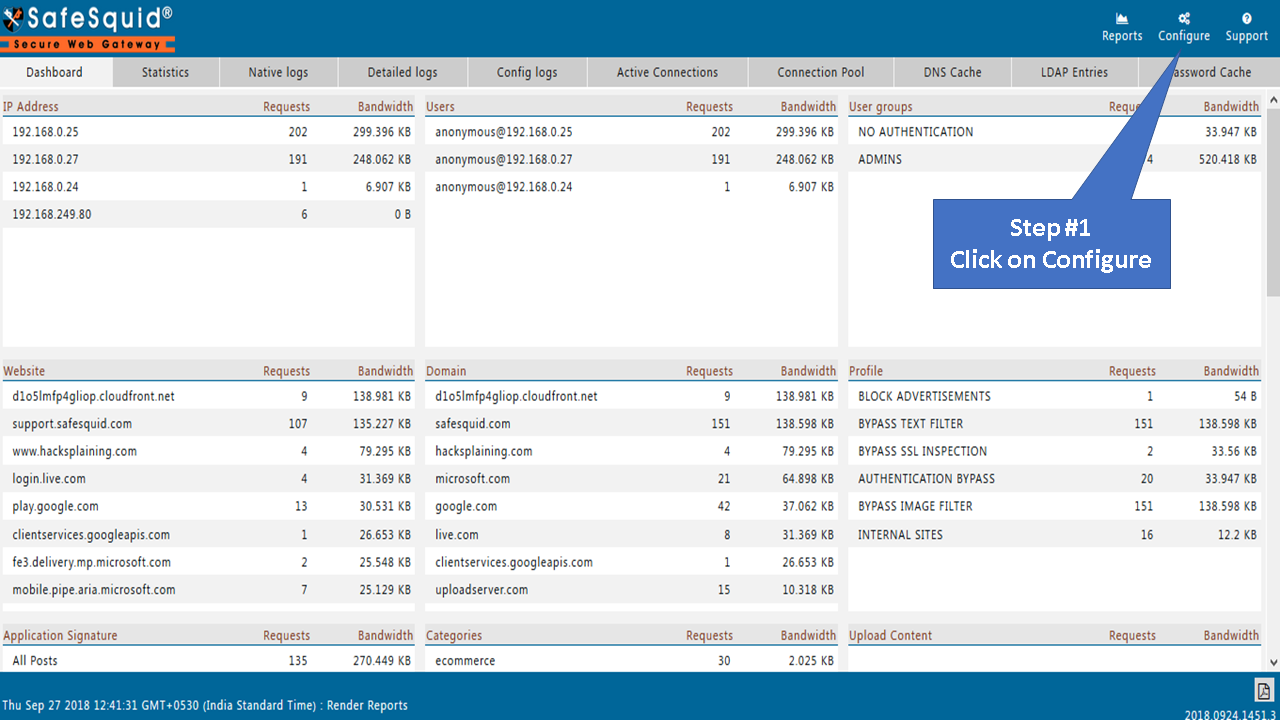 Go To Application Setup |
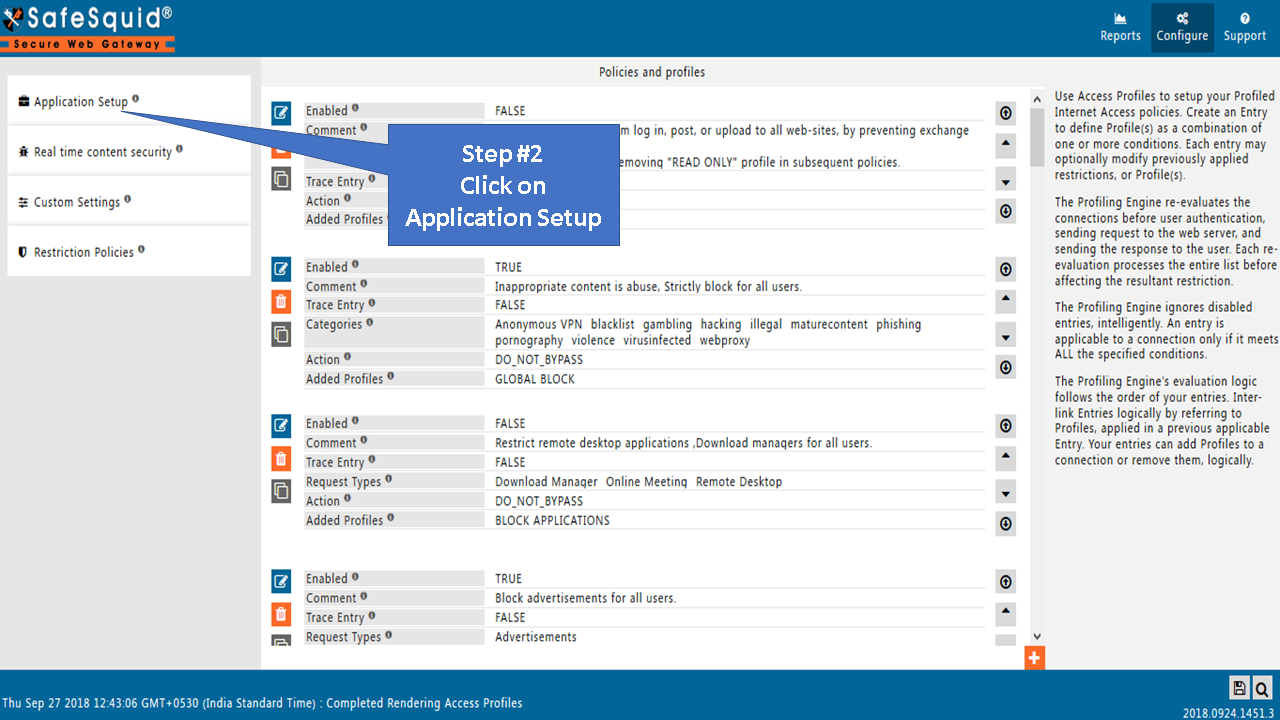 |
Open Prefetching Section from Accelerators |
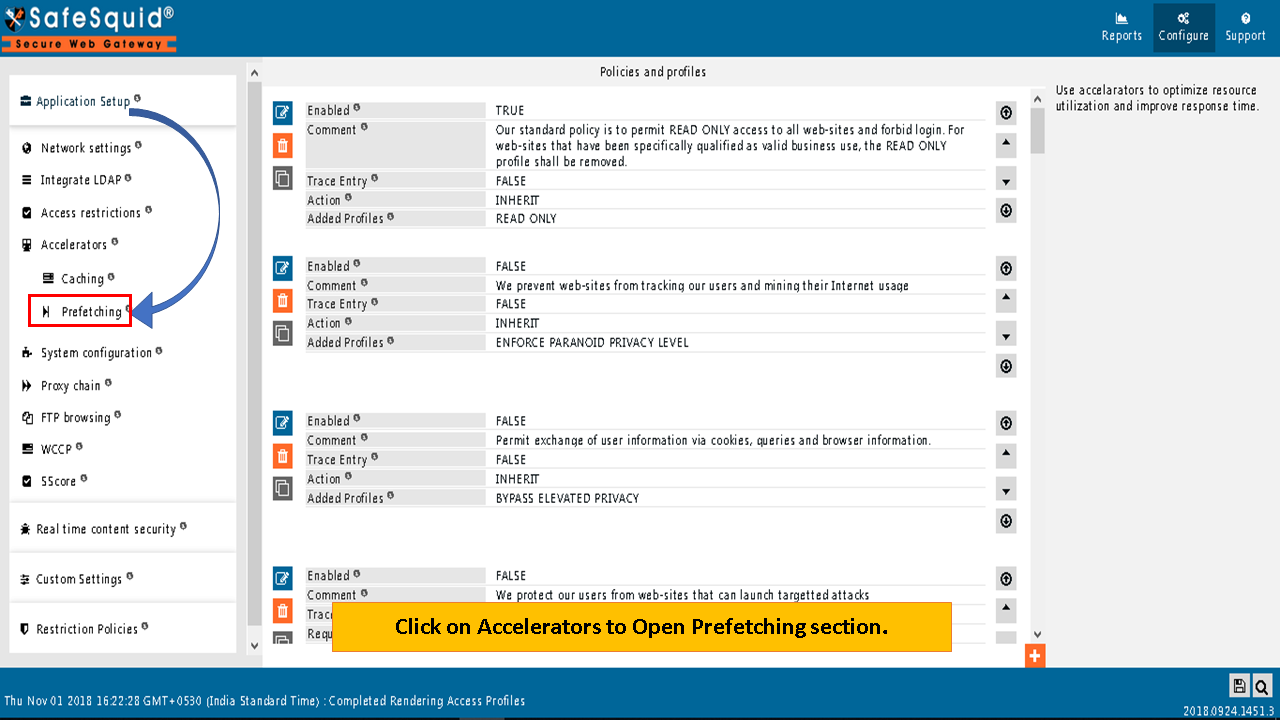 GlobalEnabledEnable or Disable Prefetching.
ThreadsMaximum concurrent threads that will be used for Pre-Fetching. SafeSquid service must be restarted to effect any change in this setting. Optional Values are 1-256. Queue sizeSpecify the maximum size of the prefetch queue. Each identified link is pushed to the bottom of the prefetch queue The links starting from the top of the queue are fetched, analyzed, and cached. The newly identified links are ignored, if the queue is full. Optional Values are from 1 to 256. Host LimitSpecify the maximum number of queued prefetches per host. Prevent too many parallel fetches to the same host. Optional Values are from 1 to 256. |
Make sure Global part of Prefetching Section is true.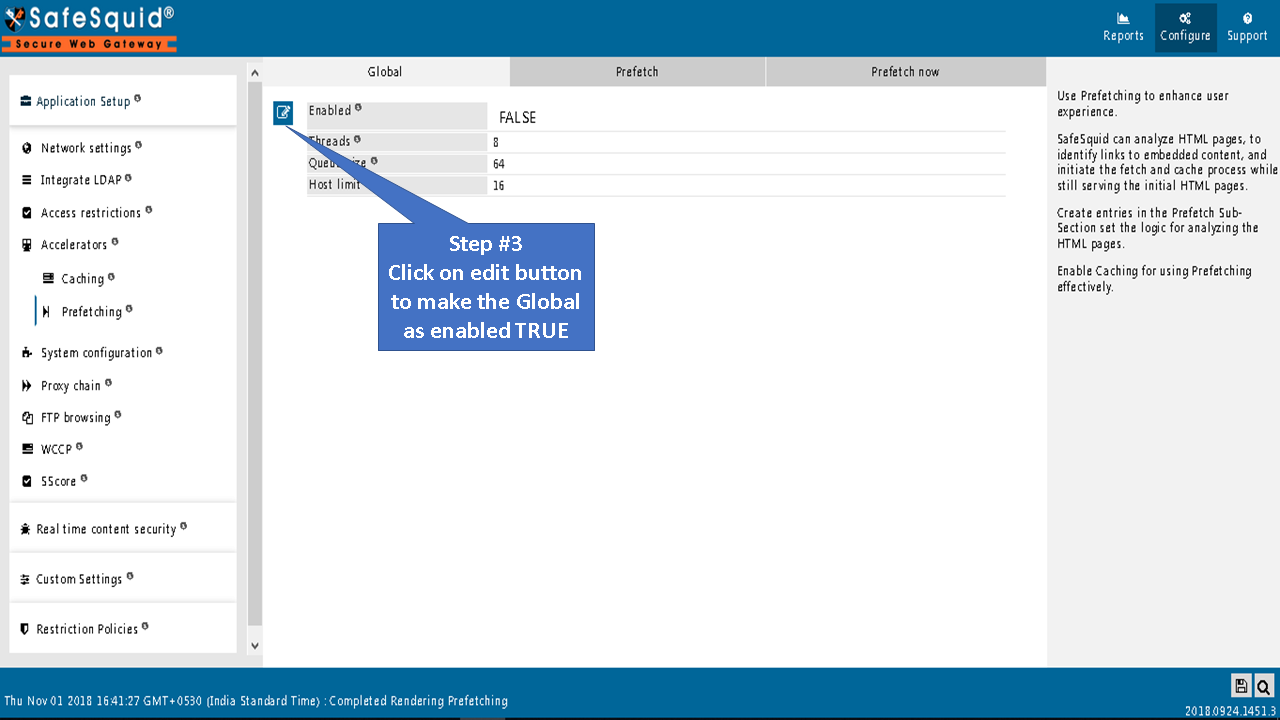 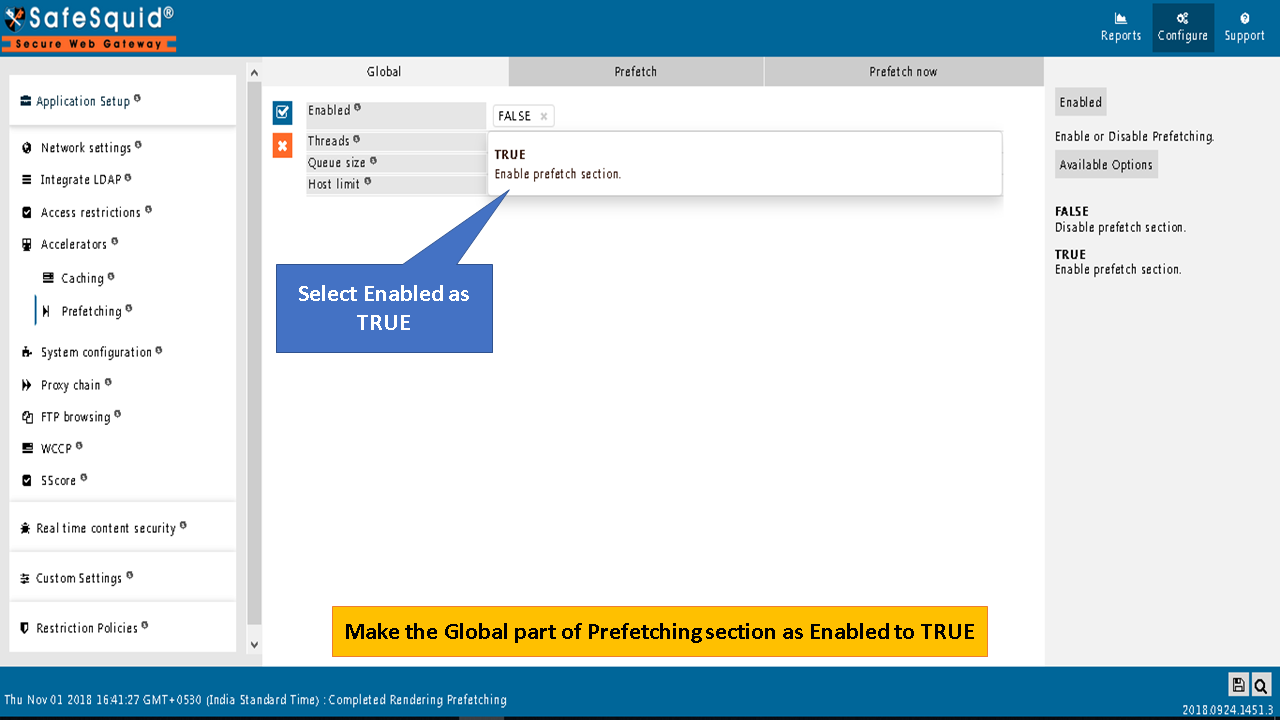 |
Save the Global part of prefetching section. |
Open Prefetchng section to change the configuration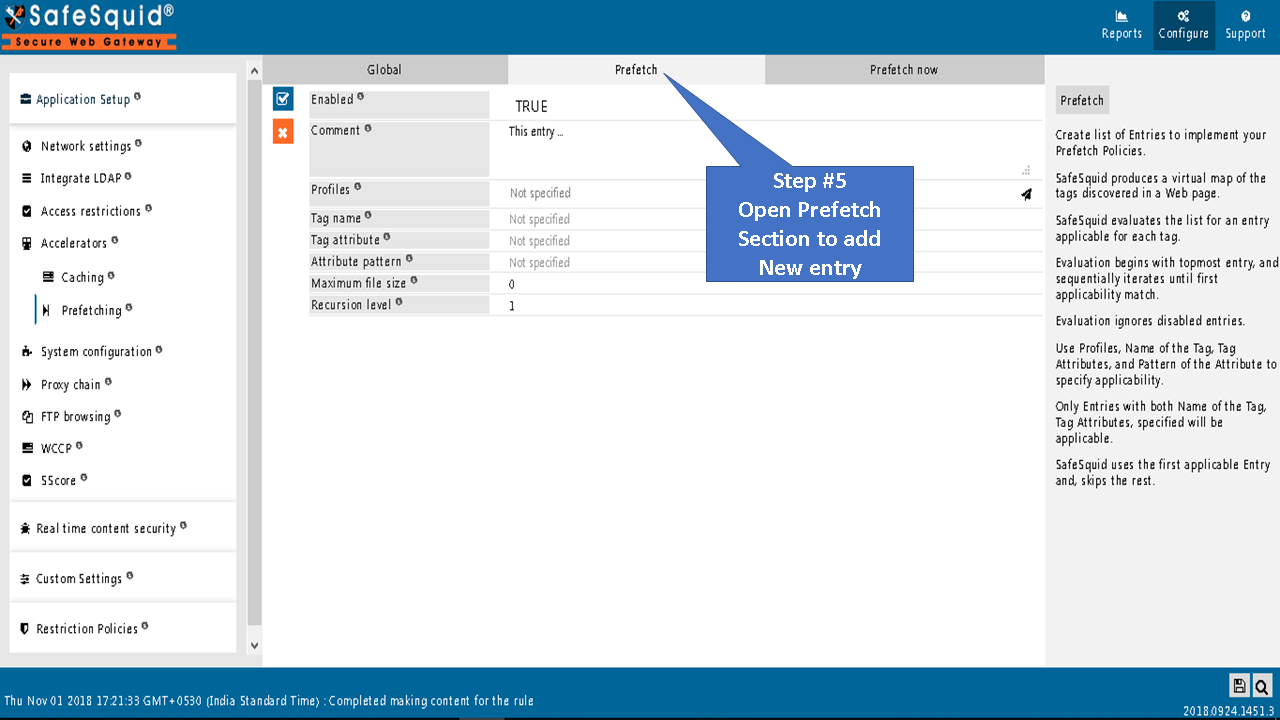 PrefetchCreate list of Entries to implement your Prefetch Policies. SafeSquid produces a virtual map of the tags discovered in a Web page. SafeSquid evaluates the list for an entry applicable for each tag. Evaluation begins with topmost entry, and sequentially iterates until first applicability match. Evaluation ignores disabled entries. Use Profiles, Name of the Tag, Tag Attributes, and Pattern of the Attribute to specify applicability. Only Entries with both Name of the Tag, Tag Attributes, specified will be applicable. SafeSquid uses the first applicable Entry and, skips the rest. EnabledEnable or Disable this entry.
CommentFor documentation, and future references, explain the relevance of this entry with your policies. ProfilesSpecify the Profiles applicable for this entry. This entry will be applicable only if the connection has any one of the specified profiles. Leave it Blank, to apply for all connections irrespective of any applied profile. To avoid application to a connection that has a profile, use negated profile (!profile). Tag NameSpecify the HTML tag that should be analyzed for pre-fetchable URLs. For example : A, img, link, script. Tag AttributeSpecify the attribute of the HTML tag, holding the URL to be prefetched. For example : href, src,etc. Attribute PatternSpecify the regular expression to evaluate the URL discovered in the Tag Attribute. If the regular expression matches, the URL is logically expanded, and pushed into the prefetch queue. Maximum file sizeSpecify the maximum size of the file to be prefetched. Use suffix – K, M, G, for Kilo Bytes, Mega Bytes, Giga Bytes Hint : Set this to 0 for an unlimited size. Recursion LevelSet the Recursion limit to 0, or a higher positive integer. Prefetched content is analyzed, to discover new prefetchable URLs. Recursion limits this iteration. Note : Setting to 0 causes links to be followed, indefinitely. |
Prefetch NowAdd a popular URL into the prefetch queue. The Prefetched content will be cached. Add URL to prefetch queue. 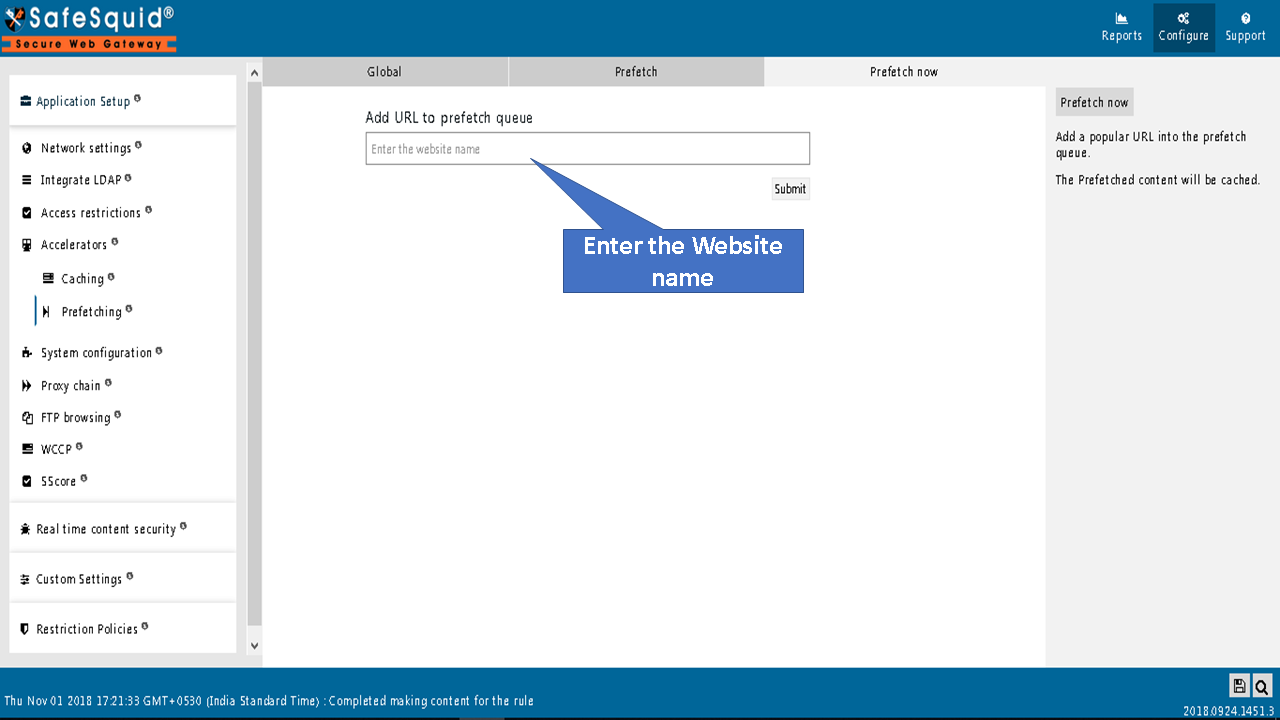 |